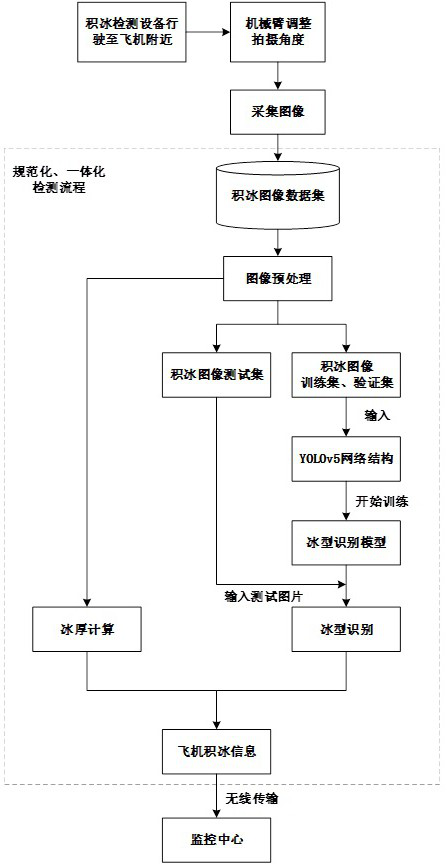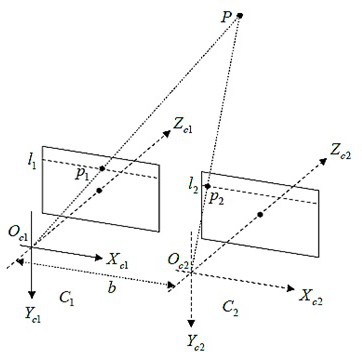Airplane ground icing detection method, device and system and computer equipment
A ground detection and ice accumulation technology, applied in the field of aircraft ground ice detection, can solve the problems of low sensor accuracy, non-standard detection process, poor robustness, etc., and achieve simple and easy operation of image processing and establishment process , the effect of reducing the measurement error
- Summary
- Abstract
- Description
- Claims
- Application Information
AI Technical Summary
Problems solved by technology
Method used
Image
Examples
Embodiment 1
[0127] like figure 1 As shown, the method for detecting icing on the ground of an aircraft provided by the embodiment of the present invention includes the following steps:
[0128] S101 , using a binocular vision sensor to collect image information of the icing on the ground of the aircraft, preprocessing the image and marking the icing characteristics.
[0129] S102, quantify the ice thickness image information into numerical values through the scaling principle, randomly classify the ice accretion images processed by the icing images to form a data set, and build an ice accretion type recognition model based on the YOLOv5 algorithm, so as to realize the difference between the ice thickness and the thickness of the aircraft ground. Normalization process for type detection.
[0130] S103, finally design an aircraft ground icing detection device based on visual sensors to realize the integrated detection of aircraft ground icing conditions.
[0131] In an embodiment of the...
Embodiment 2
[0133] According to the method for detecting icing on the ground of an aircraft provided in Embodiment 1, such as figure 2 As shown, the method for detecting icing on the ground of an aircraft provided by this embodiment of the present invention is further described in detail in Embodiment 1, and the specific steps include:
[0134] (1) Use binocular vision sensor to collect image information of aircraft ground icing;
[0135] (2) Perform grayscale, denoising, morphological processing, affine transformation and other preprocessing on the collected ice accretion images;
[0136] (3) Quantify the image information of ice accretion thickness into numerical values through the scaling principle;
[0137] (4) Mark the icing area and type of the collected icing images, divide the image data set into training set, validation set, and test set, and train the ice accretion type recognition model based on the YOLOv5 algorithm;
[0138] (5) Input the test set into the trained model, ...
Embodiment 3
[0141] On the basis of Embodiment 2, as a preferred embodiment, as image 3 The principle of 3D reconstruction of the icing area is shown. In step (1), the 3D reconstruction of the icing area is performed by using binocular stereo vision (the relative position of the binocular vision sensor is calibrated to restore the 3D information of the icing area):
[0142] The relative position of the binocular vision sensor is calibrated to restore the three-dimensional information of the icing area:
[0143] Rotation matrix for relative position relationship and translation vector to indicate that the binocular stereo calibration is the solution and process; the known left and right external parameters are , any point in the checkerboard space , its coordinate value in the world coordinate system is , the coordinates of the point projected by the binocular vision sensor in the coordinate system of the left and right vision sensors are and , from the transformation rel...
PUM
 Login to View More
Login to View More Abstract
Description
Claims
Application Information
 Login to View More
Login to View More - R&D
- Intellectual Property
- Life Sciences
- Materials
- Tech Scout
- Unparalleled Data Quality
- Higher Quality Content
- 60% Fewer Hallucinations
Browse by: Latest US Patents, China's latest patents, Technical Efficacy Thesaurus, Application Domain, Technology Topic, Popular Technical Reports.
© 2025 PatSnap. All rights reserved.Legal|Privacy policy|Modern Slavery Act Transparency Statement|Sitemap|About US| Contact US: help@patsnap.com



